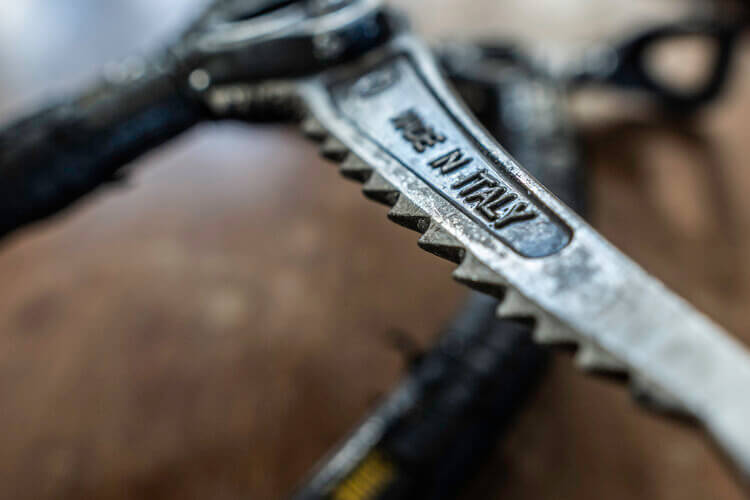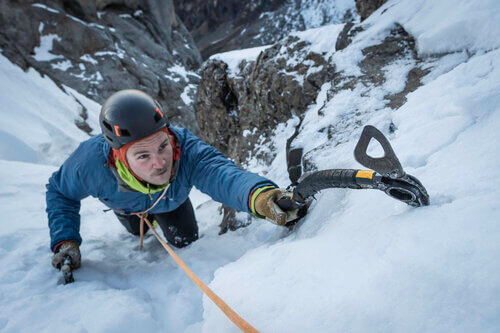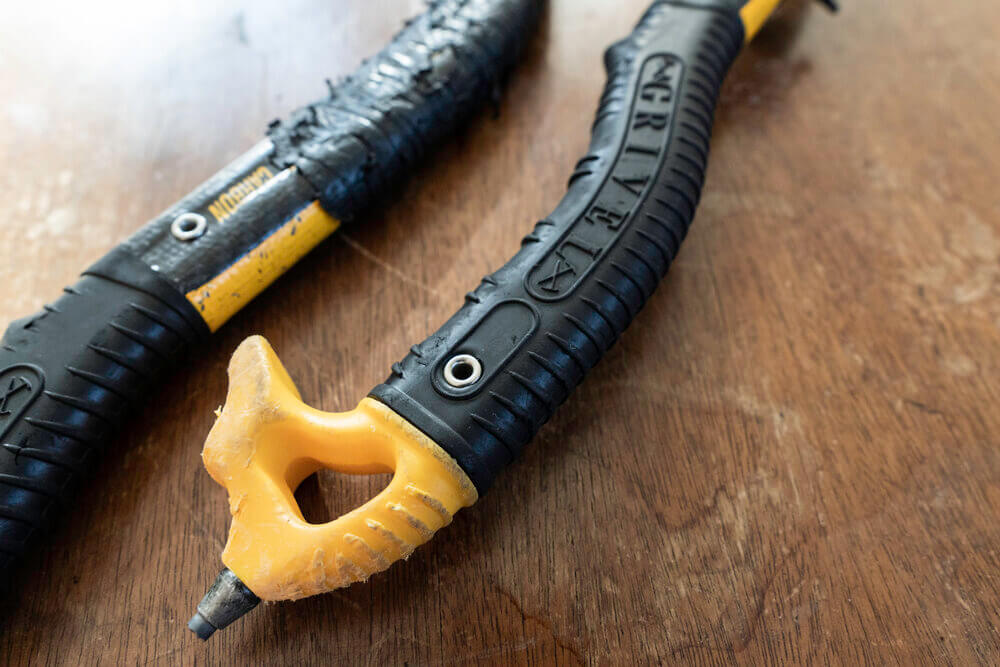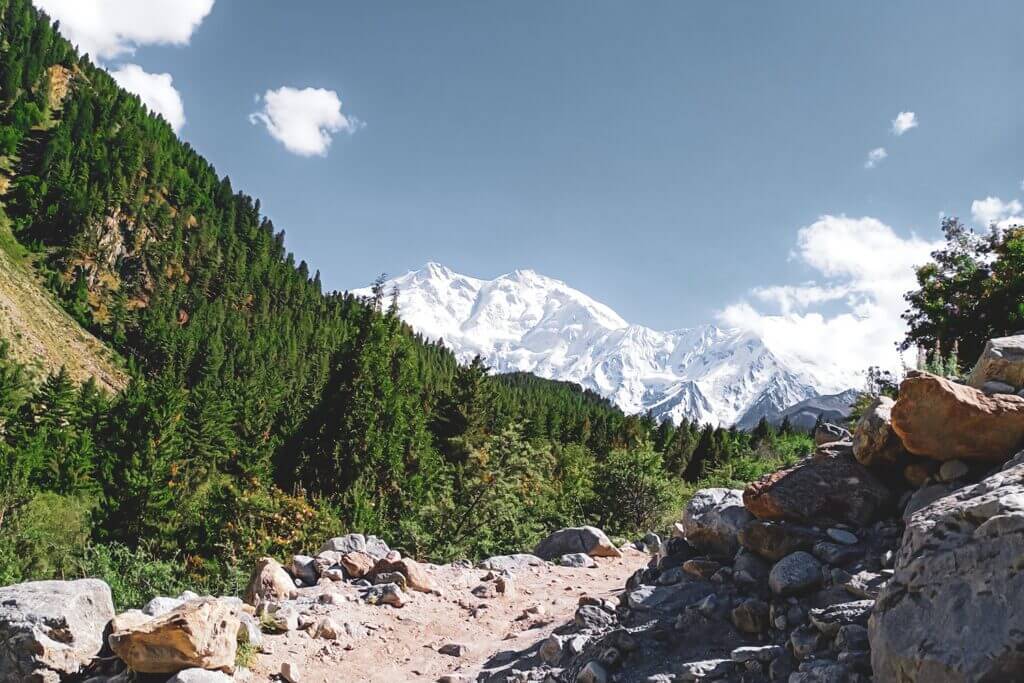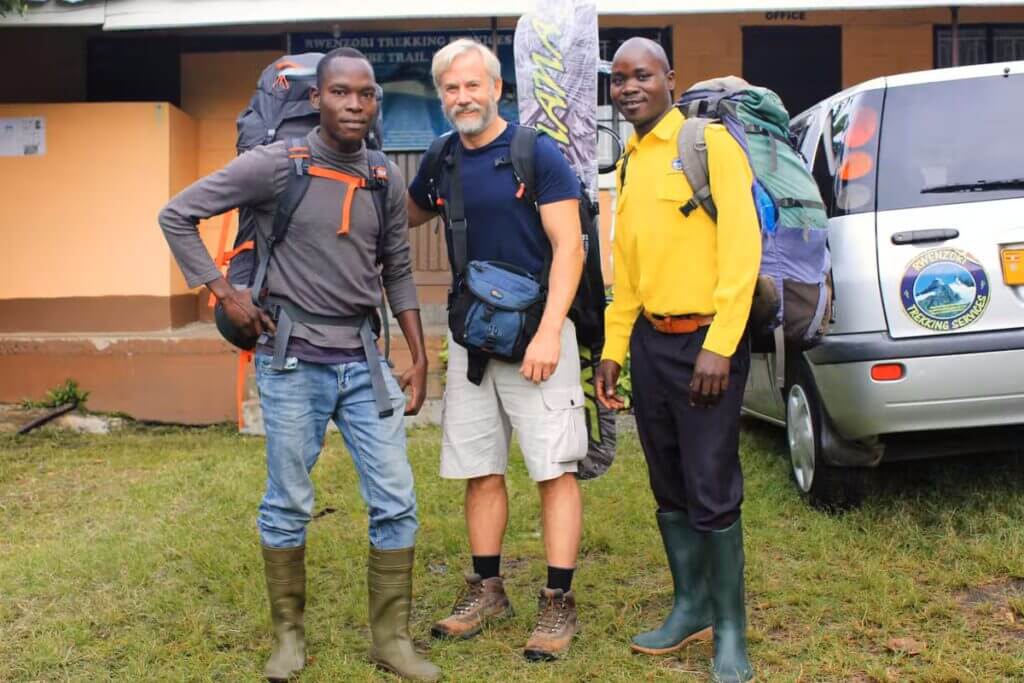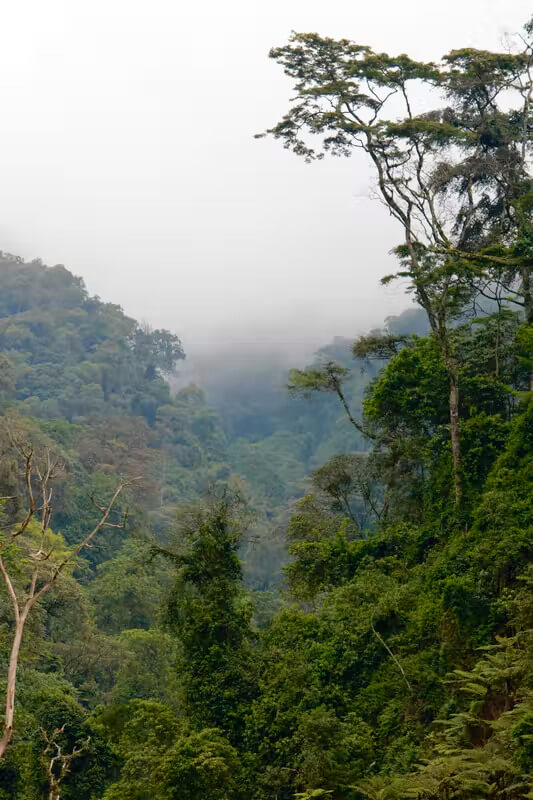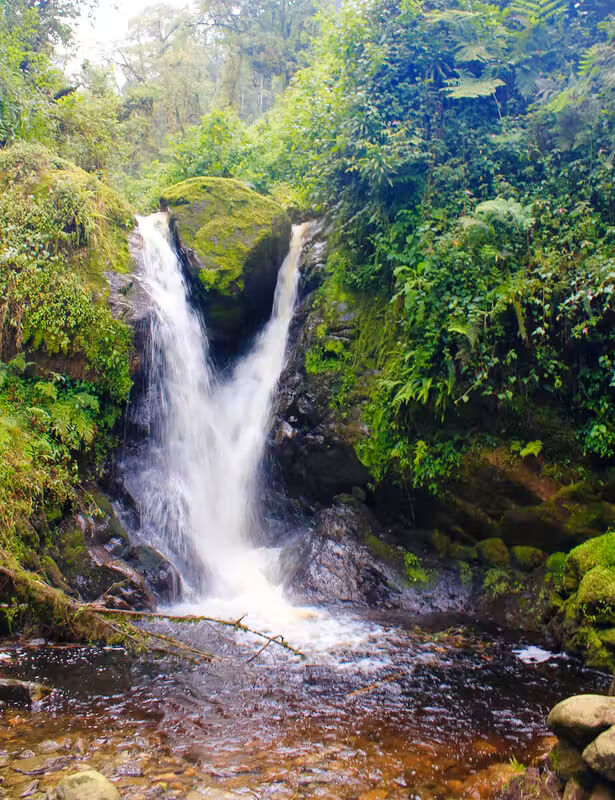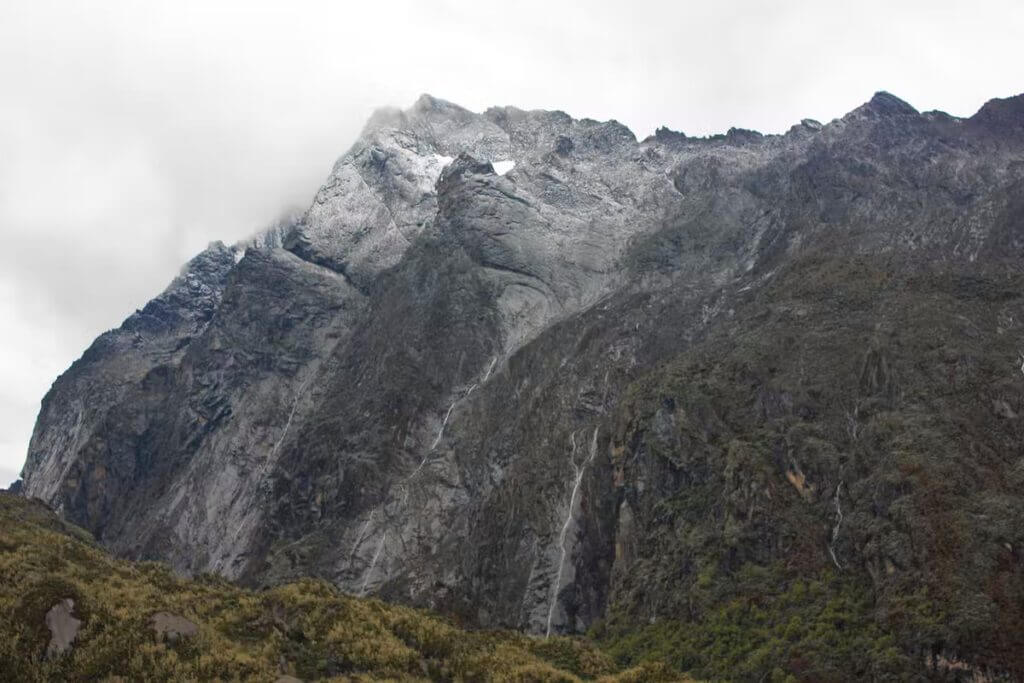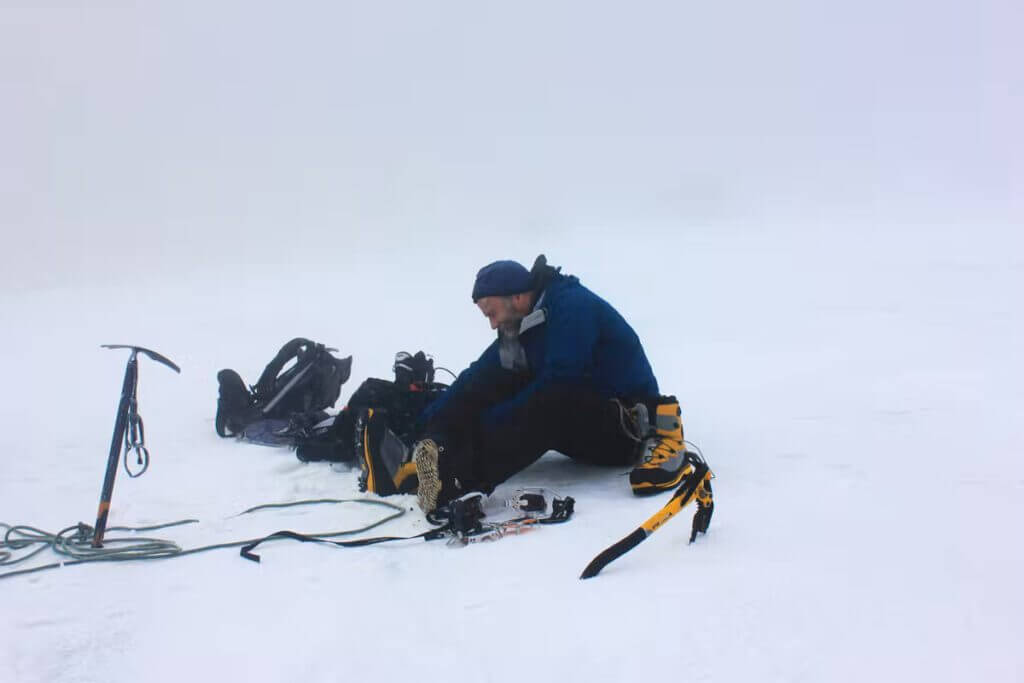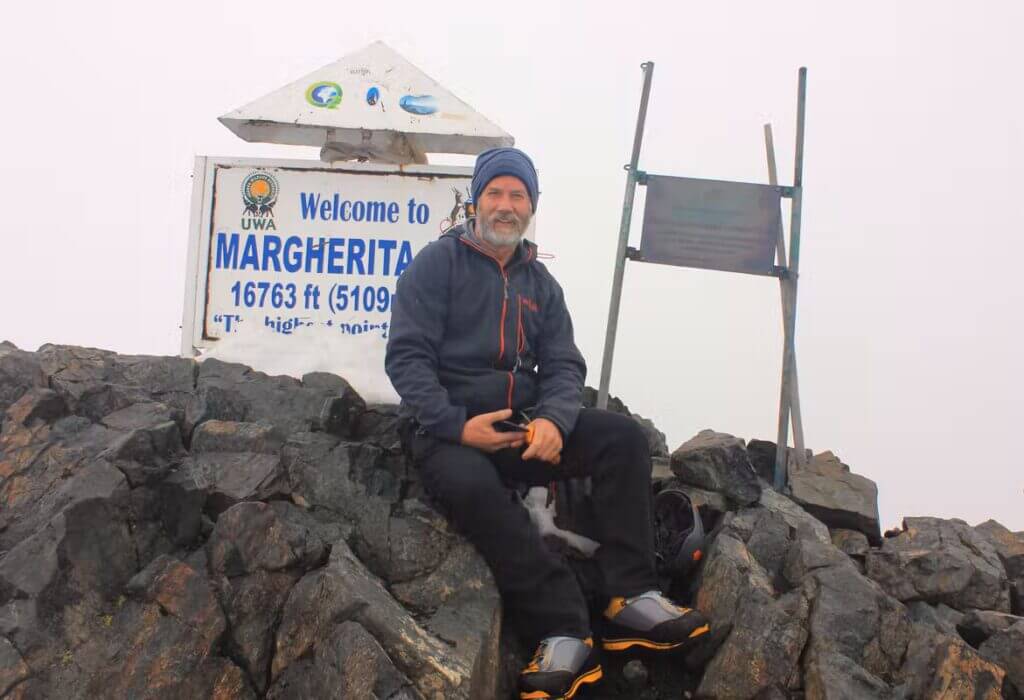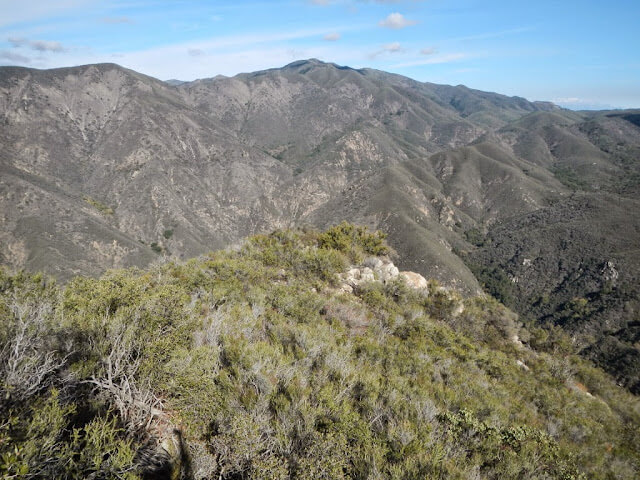The Midi Plan traverse was our third climb of the week, and it turned out to be a lot of fun.
Earlier in the week, we had met Jack, on his own, on the Aiguille du Tour and had enjoyed several lazy lunches with him over the following days. He had climbed and skied extensively in the area and was an interesting source of info.
Midi Plan traverse – startup at Aiguille du Midi
We thought it would be good to do a route together, so over another lazy lunch, we made plans to meet up at the télépherique station the following morning in time to get the first cable car up to the Aiguille du Midi.
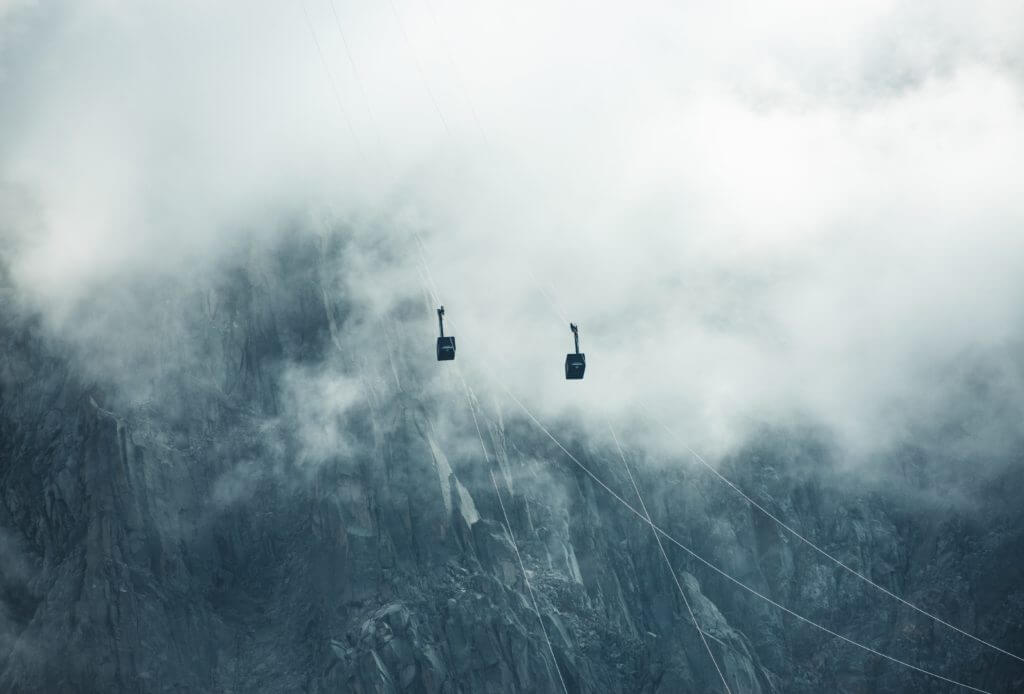
Adrian and I managed to get ourselves up and out of the campsite on time. The weather for the day was forecast to be ok for the morning with storms in the afternoon. We planned to traverse from the Aiguille du Midi across to the Aiguille du Plan and then return on the same route, back down in Chamonix in the middle of the afternoon and enjoying a beer or two.
We met Jack, bought our tickets and then waited, with many other climbers, eating breakfast of oranges, muesli bars and chocolate. The ride up was the usual squash, and once at the top, we went in search of loos and then got kitted up in the Midi station complex’s cold, damp, rocky tunnels.
Outside, the wind was blowing coldly and strongly. I put on plenty of clothing and felt a bit apprehensive. By the time we got going for real, it was about 7:15 am. We plodded out of the tunnel entrance onto the snow. Many parties were heading out and down the ridge, some going our way and some heading down the ridge and breaking off to the right. The initial descent was pretty steep, but the snow was good and the steps large.
On our left, the ridge fell away steeply down to Chamonix. Our route soon flattened off, and we plodded along with Jack at the front and myself at the rear. The route rose and fell, keeping to the snowy crest of the ridge. At times we had the odd awkward step down to contend with, but generally, it was easy going.
The descent from Aiguille du Midi
We then started a steep descent down onto the Col du Plan. From here, the route got more interesting. Finally, we left the ridge and skirted off onto a dirty steep snow face to the left.

After going a short distance, Jack gave the order to turn around. But unfortunately, he was having problems with one of his crampons and wasn’t too keen on reversing the section later in the day. So back on the col, he said he’d leave us and head back to the Midi station. We then went back onto the steep ground with Adrian in the lead. We front pointed our way round and below some crumbly rock.
Above us was an English youth anchored to the rock. We waited for him to move on. Time ticked away, so Adrian put in a screw while we waited. Eventually, we gave up waiting, climbed up to the rock, and carefully traversed along with it before front-pointing back onto the ridge. It was a good section despite the dithering English youths. We left the screw in place with the intention of using and collecting it on our return. We continued along the snowy ridge for a short distance before descending onto another col. It was then a scramble up some loose rocky terrain to regain a more snowy ridge.
Challenging Abseils
We then came to a cliff section. As we only had one rope, we needed two abseils to get down. I decided to leave my crampons on and, on the first abseil, slipped sideways, banging my bare elbow on the warm brown granite. A nice bloody gash appeared. Not liking the sight of blood, I successfully did my best to block it out of my mind.
The second abseil deposited us onto a steep snow slope, which really didn’t feel too secure. We got ourselves roped up and then carefully headed across the steep slope. After a few steps, Adrian stopped briefly. There was then a loud, soft thud behind me. I immediately thought someone had fallen, but turning around, I saw a large flat rock tumbling quickly down the slope taking plenty of soft snow with it. Looking up at the cliff, we thought, “where the hell did that come from”. It had fallen a long way out from the secure-looking cliff above. Nevertheless, we didn’t dwell on our close call and moved carefully and swiftly across the slope, thinking it might avalanche at any moment.
Midi Plan traverse – to the summit
Thoughts of returning were not filling me with joy. However, I felt some relief once we got back to the crest of the ridge. The rocky summit was now very close. We slowly plodded up to the base of the rock. We met another party of four who had just abseiled down and had caught their rope whilst pulling it down. Then Adrian took the lead and shot up after we had a quick search for the most straightforward line up. The climbing was easy and fun.
I took the lead on the next pitch and stopped just below the summit to avoid rope drag. Adrian finished the last 10ft off with an elegant mantle move, and we were then on the small flat rocky summit. As usual, the views were awesome. We had the usual photo shoot and then took a good break and discussed how to return. We decided the snow was now too soft to return the way we’d come safely and that the safest option was to descend the steep crevasse-ridden Envers du Plan glacier down to the Requin hut, plod along and down the Mer de Glace and then take the train from Montenvers back down to Chamonix.
Midi Plan traverse – starting the descent
As we sat there, some small birds joined us. They had their heads back, beaks open and were calling out for food. I found the situation a little unsettling. We sorted the rope and abed off. Not learning from the party we saw earlier, we also got our rope jammed as we pulled it down. Adrian did a nifty little climb to retrieve it. The adrenaline started flowing at the top of the steep snow slope on the Col Sup du Plan. I set off in front, at first facing out, then opted to face in, kicking good steps as we slowly descended.
My left leg instantly sank up to my groin
As we neared the bottom, we came to a steep rimaye with a snow-covered crevasse below. Foolishly I tried to front point down it and swung my axe into the soft snow for some support. Not surprisingly, the head just slipped through the snow, and I fell a couple of feet before Adrian held me on the rope. He slowly lowered me onto the snow bridge, where my left leg instantly sank to my groin.
Panicking like mad, I tried to scramble out and off the snow bridge. It was hard work, but eventually, I got out and slumped down onto more solid snow breathing heavily with my heart thumping. I then belayed Adrian down and across while he made short and easy work of the obstacle.
We took a short break.
As we sat there, soft, slushy snow poured down the slope across to our right. We quickly got going and enjoyed some flat terrain before the glacier started to drop steeply down. Our route took us around some huge gaping crevasses, often on steep, narrow bridges around and across them. At times we had to descend steeply between large yawning drops. I found the descent mentally taxing and was happy to get out of the wide crevasses and onto easier terrain. Unfortunately, the cloud was rolling in as we neared the hut, and rain was looking very likely. It had taken us 2 hrs to get down.
We took our packs off and sorted out the rope and our gear. The guardian came to us to find where we’d come from. We downed a couple of cokes while the guardian explained how we should descend the Mer de Glace to return to Montenvers. We had an hour and a half to get down if we were to catch the last train. So we set off at pace in some light drizzle and descended down onto the large flat dry glacier. We took a line heading down and across to the right. This was what I thought the guardian had instructed.
After skirting around a heavily crevassed section, we found ourselves on the rubbley moraine on the wrong side. It soon became apparent we were way off course. We slowly plodded up and down the moraine, trying to find evidence of a track, occasionally spotting the odd cairn. It was miserable hard work, we were both tired, and the chances of making it to the train quickly disappeared.
Eventually, we left the rubble and headed back onto the glacier. We crossed some fast-flowing streams, falling into one would have been curtains, and carried on heading down and across. Adrian slowly pulled away from me. I felt totally beat. We had missed the last train, and I really didn’t want to hike all the way back down to Chamonix.
I stopped and bent down to drink from small pools on the glacier a few times. The water was beautifully refreshing and chilled. As we neared the end of the glacier, we found route markers. It was then a steep climb up some metal ladders onto a well-worn track above.
Walk back to Chamonix – the end of the Midi Plan traverse
The hike back down to Chamonix took about an hour and a half. It was pretty pleasant being back in the trees and off the snow. I regretted not filling my water bottle whilst on the glacier. As we neared Chamonix, it was nearly dark. Once back on the tarmac roads, we headed for the station and stopped at a café for a couple of cans of cold coke. They tasted great. It was then a quick march back to the campsite before the shower room closed at 9:30.
It had been a long day; we had climbed only a few hundred metres but descended close to 3000m and covered about 17km. It was also the first peak I had climbed, where my start point was higher than the summit. After a clean shower and a change of clothes, we headed back into town for a mighty feed, but when the food arrived, we discovered we really didn’t have an appetite and only managed to force down a plate of pasta.
All in all, it was a fine day on a route that seemed to have a bit of everything.

